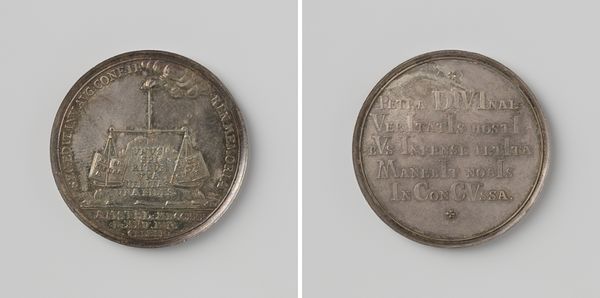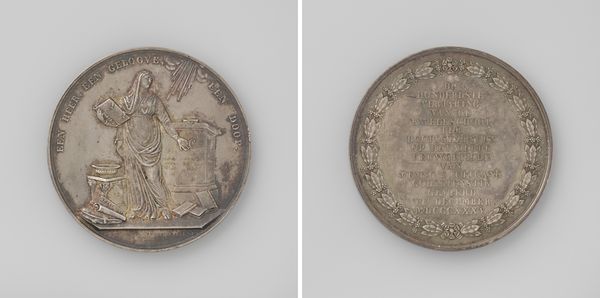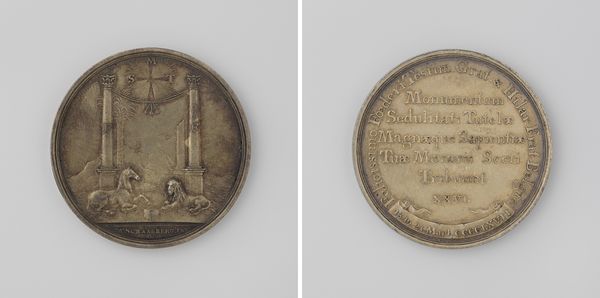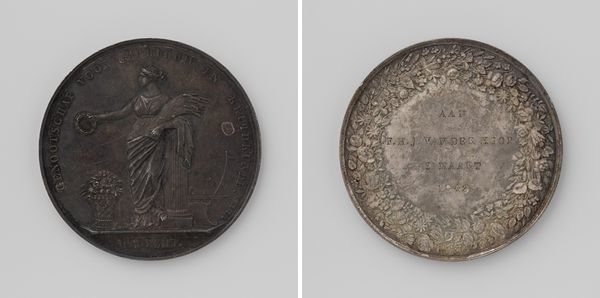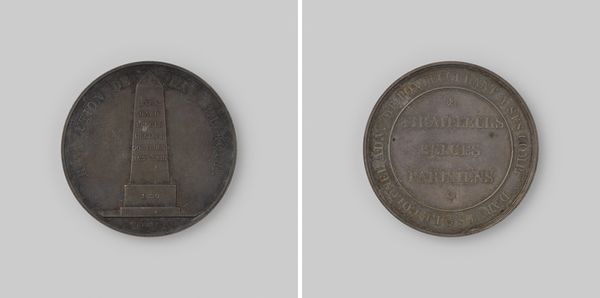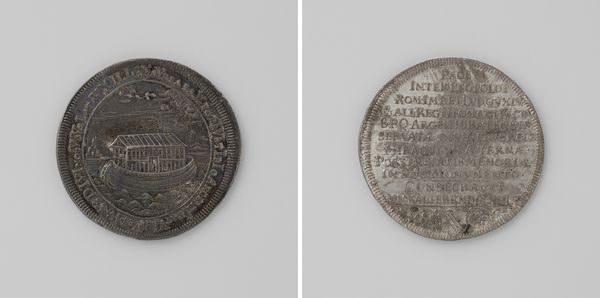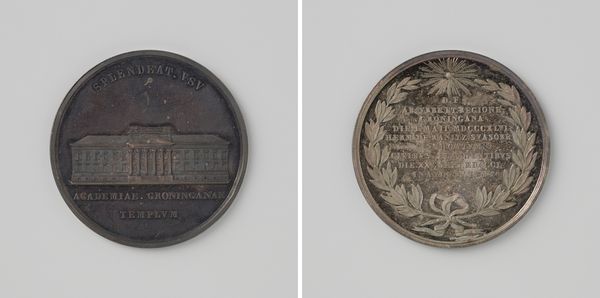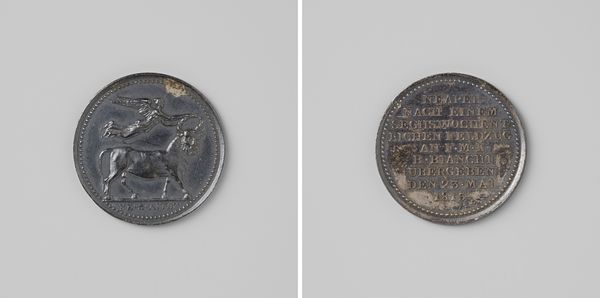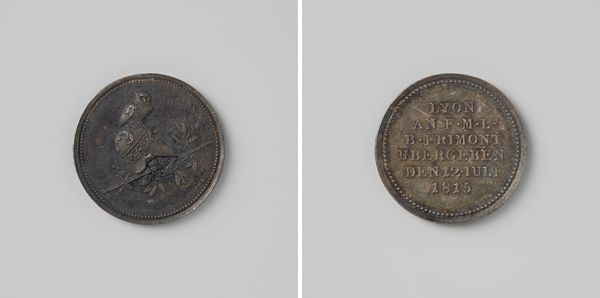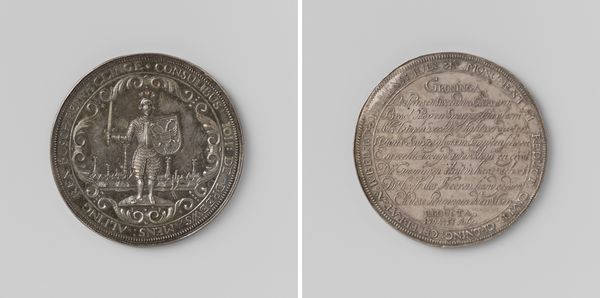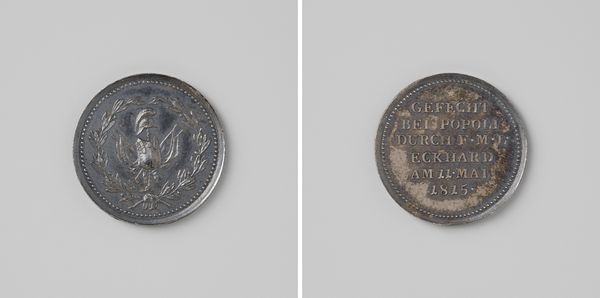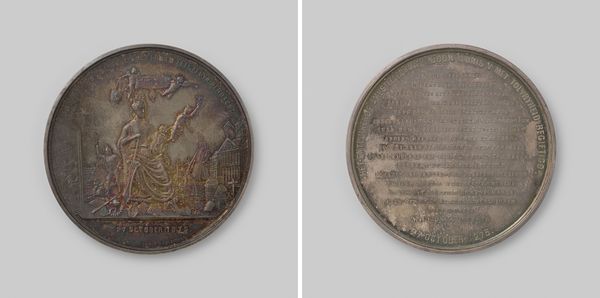
Honderdjarig bestaan van de Kweekschool der Doopsgezinden te Amsterdam 1835 1835
0:00
0:00
Dimensions: diameter 4.5 cm, weight 35.34 gr
Copyright: Rijks Museum: Open Domain
Editor: So this medal, created by David van der Kellen in 1835, commemorates the centennial of a Mennonite seminary in Amsterdam. It is an engraved print made on metal. My first impression is the contrasting imagery on either side. What's your take on this piece? Curator: Well, let’s think about the process. Metalworking at this time demanded specialized knowledge. The medal itself—a manufactured object—speaks to the growth of institutions. We should question its symbolic worth alongside the material used. This was not cheap to produce. Why strike a medal? Editor: I guess to create something durable, that would last over time, but what was its original cultural context, why a medal and not just a printed commemorative work? Curator: Consider this medal’s function: it's not simply aesthetic. It's a token meant for distribution, a record for a specific audience. By manipulating the materials in this way, transforming raw metal into something imbued with historical and religious weight, it invites analysis beyond mere appreciation. To whom was this distributed? Was this something awarded, or was this purchased? Editor: Ah, I see! So understanding the medal’s creation – the physical process and its distribution– can reveal the social and historical meaning behind it. Something I hadn't previously considered. Curator: Precisely! The choice of metal, the engraving, the reproducibility: all were very intentional and embedded within the expanding societal values and production technologies. Editor: Thanks; I hadn't really thought of it that way, as really thinking about the how and why and for whom!
Comments
No comments
Be the first to comment and join the conversation on the ultimate creative platform.
